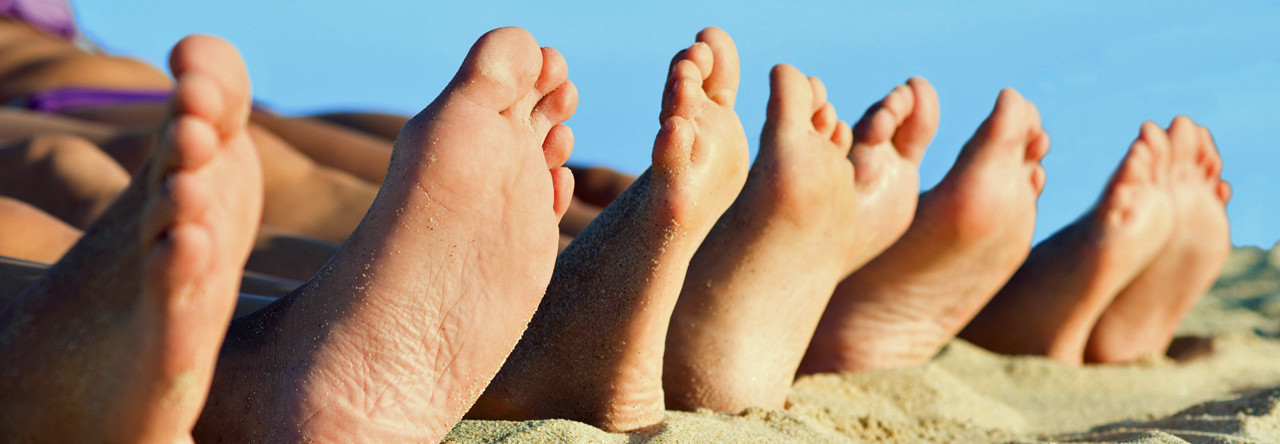For those interested, the calcaneocuboid joint is found in the foot between the heel bone (the calcaneus bone) and the cuboid bone (bone shaped and found in front of the heel bone).
The calcaneocuboid joint is a gliding joint, supported and strengthened by ligaments. They are the capsular ligament, bifurcated ligament, dorsal calcaneocuboid ligament, long plantar ligament, and plantar calcaneocuboid ligament.
The calcaneocuboid joint is important for lateral foot stability. This joint is susceptible to sudden injury or chronic strain, can can cause this joint to partially dislocate (subluxate).
When the dislocation is in the downward direction, a dull ache may be noticed. The long calcaneocuboid ligament may become strained, feeling similar to the pain of a heel spur. Applying direct pressure to the calcaneocuboid joint causes the pain symptoms……discomfort when standing on toes or rolling the arches toward the outside.
This joint allows the foot to lock for strength during the walking cycle. Any instability or dysfunction around the cuboid inhibits functional stability in the foot during the propulsive phase of gait. Lateral sports, such as tennis or racquetball, are responsible for the greatest strain. Stair climbing also can exacerbate the condition.
Treatment:
Treatment consists of manipulations of the joint and strapping to reduce the subluxation, and should be done by a professional, a chiropractor, or osteopath. Prevention is accomplished through foot supports, or orthotics, and it may be necessary to stabilize the foot and prevent re-injury. Orthotics can be obtained from a chiropractor or podiatrist.
Page 7 of 7
Preventing Foot Blisters
The key to preventing foot blisters is to purchase shoes that offer the right combination of size, comfort and support.
1 Shop for shoes in the afternoon as feet swell during the day, so midday is the best time for a good fit.
2 Wear the socks you would normally wear when you go for the fitting.
3 Measure your feet every time you purchase shoes, as your shoe size changes as you age.
4 Measure both feet and try on both shoes. If one foot is larger, purchase the larger size for both feet.
5 Check for ample toe room.
6 Look for shoes with no seam in the toe area or toe box.
7 Purchase socks with extra padding in critical areas, often available in athletic styles.
Fitting Kids
Even though the life of children’s footwear is short, it is still important that shoes fit properly and provide adequate support. Have your child’s feet measured properly. Not from the shoe stocker at the mall, but a professional that knows what to look for. Try to find a certified pedorothist in your area. Make sure they will be using a Children’s Brannock Device to take the measurements. Also, they should be measured in the seated and upright positions. Measurements can vary from a half size to a full size, depending on position. Their width should also be checked.
Here’s what to look for:
1 Wide toe box for the front part of the foot.
2 Stiff heel.
3 Good arch support. Even sandals need a modicum of arch support. Never, never buy flat soled sandals. Also, clogs, due to their wooden construction, have zero cushioning. The foot is not secured to the clog, placing more stress on the plantar fascia.
4 Look for a thumb’s width between the big toe and the end of the shoe.
5 Properly fit shoes can help your child avoid plantar fasciitis, achilles tendinitis, bunions, and neuromas.
Replace shoes regularly. Every shoe has its limits. Everyday shoes can last 100 to 200 miles. Better shoes can last 400 miles. Remember, if your kids are active, the miles tick by quicker than you think. Care for their feet and their feet will take care of them……..
The foot bone IS connected to the back bone………..
This is the honest truth! Especially when it comes to injuries to the leg. From the foot, all the way up to the top of your head, each bone is connected to another…..thus creating a chain. Injure one part of your body, such as the knee, hip or low back, and it can be caused by an abnormality in another part of the body, especially the foot! It’s the base of the body. It’s where you bear all your weight. Hitting the ground, when walking, with forces that are 1.2 times the body weight……….and when running, it’s 2.5 times. Forget jumping……5 times! The alignment of the foot, with all its many bones, tendons and muscles, influences the alignment and angles of all the bones further up the chain. This can lead to pain or injury anywhere in the body.
Your toenails, like your fingernails, should be smooth and consistent in color. Made of Keratin………it’s also in your hair and skin. Certain types of nail discoloration and rates of growth can signal lung, kidney, heart or liver diseases. It could also be diabetes or anemia.
Horizontal ridges can be a sign of a heart attack, malnutrition or respiratory disease. White spots or vertical ridges are harmless and there should be no worry as they are very common.
More minor issues include ingrown toenails, fungal and bacterial infections, blisters, corns and warts.
Thickening of the toenails is fairly common. Physical damage to your toenail, fungal infection and Psoriasis may be the root cause. Old people also often have thickened, hard toenails, probably because of the damage they have sustained over the years, and because their nails grow more slowly, it takes longer to repair the damage.
For treatment to be successful, above all you must be patient. You will have to use the treatment for at least 3 months, and some treatments take even longer to work. Your nails grow from the base to the tip and it can take 18 months for a nail to be replaced completely by a new one.
